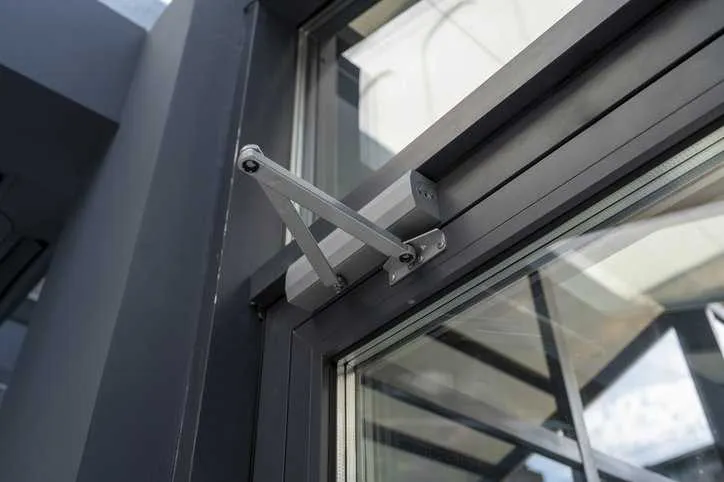ANSI/BHMA A156.4-2024: Door Closers And Pivots

When slamming, banging doors kept interrupting services in the Boston Trinity Church, Mr. L. C. Norton created the first door closer in 1877. Coil springs and double-swinging hinges were the only makeshifts available to close doors at this time; however, these devices were noisy and inconsistent in terms of closing speed. Now, door closers are vastly used discrete, efficient devices that we cannot live without, especially in commercial buildings. ANSI/BHMA A156.4-2024: Standard For Door Closers And Pivots establishes specifications for door closers and pivots.
What Are Door Closers?
A door closer is a mechanical device—usually hydraulic or spring in nature— that regulates the speed and action of a door’s swing. It makes sure that a door returns to the closed, secure position after some opened it. Hence, a key appeal of using a door closer is the range of controls to adjust the swing and motion of the door when it is used.
Benefits of Door Closers
Door closers can help a building stay secure, reduce air flow, and respond to fire alarms. Hence the benefits of door closers fall into three main categories:
- Security: Ensuring a door closes and is latched securely each use it is essential to the security of a building and its inhabitants.
- Environment: Door closers help maintain conditioned air temperatures because conditioned air will not vent out of an opened door for long periods. In other words, if the door is closed quickly and efficiently, air loss is limited and the cost of building energy is lowered.
- Safety: Door closers are used on fire rated doors to help prevent the spread of fire and smoke by closing the door behind occupants as they escape a building.
What Is ANSI/BHMA A156.4?
ANSI/BHMA A156.4-2024 contains requirements for door closers surface mounted, concealed in the door, overhead concealed, and concealed in the floor. The American National Standard also covers pivots for floor closers. The criteria for conformance include cycle, operational, and closing force tests. ANSI/BHMA A156.4-2024 provides optional tests that should be specified separately.
For use on fire doors, the standard maintains that a door closer used on labeled fire door assemblies should be listed or labeled by a nationally recognized independent testing laboratory, and be subject to a periodic in-plant follow-up service.
Are Door Closer Required for Fire-Rated Doors?
Yes, door closers are required for fire-rated doors. Door closer are used to help prevent the spread of smoke by keeping the door closed. As such, fire doors are a critical part of the fire compartmentation of a building and must be closed in the event of an outbreak of fire.
Performance Tests for Door Closers in ANSI/BHMA A156.4
Tests in ANSI/BHMA A156.4-2024 are performed under neutral air pressure laboratory conditions and between 60-85 degrees F. The standard notes that in actual usage, results vary because of installation, maintenance, and environmental conditions.
Changes from ANSI/BHMA A156.4-2019
The 2024 revision of ANSI/BHMA A156.4 re-structured the standard with updated headers and clearer organization/structure of the standard. As such, certain sections have been removed, expanded on for clarification, or bolded and underlined.
For example, ANSI/BHMA A156.4-2024 updated the table under section 2.6 for “all closers” to now include grade and feature description. The revised standard also changed section 3 to ‘Test Equipment and Fixtures’ from “Preparation for Performance Test,” and it revised the section on “Marking” and now includes a section on “Measuring Equipment.” ANSI/BHMA A156.4-2024 additionally re-worked the contents of the test procedures, making it clearer to read.
ANSI/BHMA A156.4-2024: Standard For Door Closers And Pivots is available on the ANSI Webstore.






